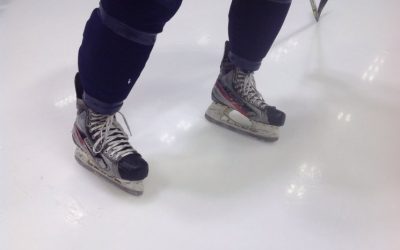The secret to scoring goals
In light of the revelations made in a previous article, it’s now clear that goalies anticipate the puck’s trajectory based on the player’s shooting motion, even before contact with the puck is made. A striker who knows this knows the key to successfully foiling a keeper with his shot: he must be able to conceal his intentions during his shooting motion.
In order to avoid showing the goalkeeper where the shot is aimed, the attacker may try to catch the goalkeeper off-guard by taking a shot without warning or without giving the goalkeeper any indication of preparation. The best example is the skating shot, in which you continue to skate while shooting. With this type of throw, the keeper’s reaction time increases, as the information processing stages start later and are more complex (1). The guard’s reaction time can increase from 50 to 200 ms, almost double the usual reaction time.
Another way of beating a goalkeeper who anticipates the puck’s trajectory based on the motion of the shot is to do something other than what you project. The consequence of the puck’s contact with the stick’s blade must therefore not be the one predicted by the player’s momentum. This type of shot can be deliberate (a disguised shot) or even involuntary, as when a player misses his shot and the puck still eludes the goalkeeper.
In short, to outwit a goalkeeper, an attacker must be able to fool the analysis of the goalkeeper’s throwing motion. The best scorers are those who can hide what they’re going to do from the goalkeepers. Of course, a successful skating shot or disguised throw is an advanced skill.
The mastery of classic throwing techniques should be a priority for young players before venturing into this kind of practice. All this should be integrated late in the stages of a field hockey player’s balanced development. Many hours of practice are needed to make shots that will fool goalkeepers, but it’s with these that the best strikers stand out.
Written by Léandre Gagné Lemieux, M.Sc. Kinesiology
References
1. Schmidt RA, Lee TD (2005) Motor control and learning: A behavioral emphasis. Fouth edition. Human kinetics. Champain, Il, 537 pages.
Want to stay on top of new articles before they’re published?
Subscribe to our newsletter.
From the same author
Why is it easier to turn left?
Why is it easier to turn left? MAXIME Sports physiotherapist In a field hockey match, various skating techniques are used to counter the opponent. A technique of choice for quickly changing direction while maintaining good speed is the sharp turn. On the one hand,...

